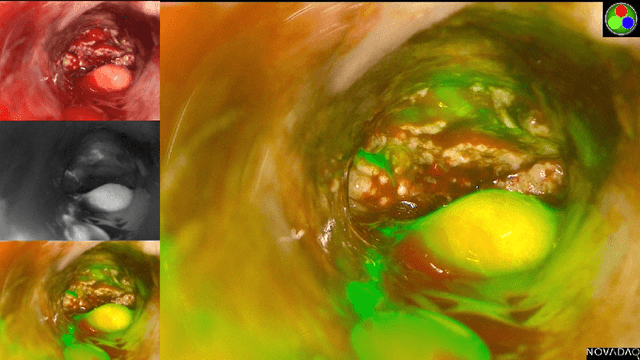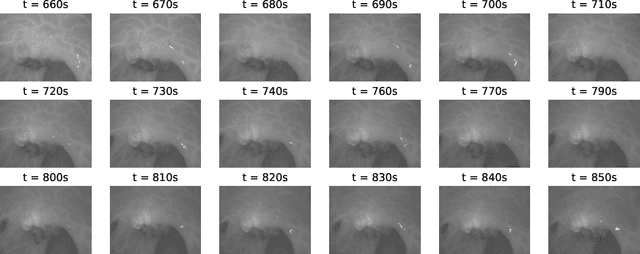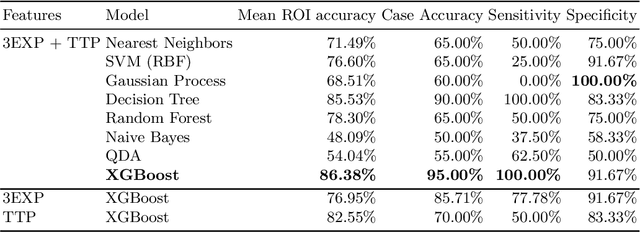Pol Mac Aonghusa
Extracting, Visualizing, and Learning from Dynamic Data: Perfusion in Surgical Video for Tissue Characterization
Nov 09, 2022Abstract:Intraoperative assessment of tissue can be guided through fluorescence imaging which involves systemic dosing with a fluorophore and subsequent examination of the tissue region of interest with a near-infrared camera. This typically involves administering indocyanine green (ICG) hours or even days before surgery and intraoperative visualization at the time predicted for steady-state signal-to-background status. Here, we describe our efforts to capture and utilize the information contained in the first few minutes after ICG administration from the perspective of both signal processing and surgical practice. We prove a method for characterization of cancerous versus benign rectal lesions now undergoing further development and validation via multicenter clinical phase studies.
* Presented and published at IEEE International Conference on Digital Health (ICDH) 2022
Perfusion Quantification from Endoscopic Videos: Learning to Read Tumor Signatures
Jun 25, 2020



Abstract:Intra-operative identification of malignant versus benign or healthy tissue is a major challenge in fluorescence guided cancer surgery. We propose a perfusion quantification method for computer-aided interpretation of subtle differences in dynamic perfusion patterns which can be used to distinguish between normal tissue and benign or malignant tumors intra-operatively in real-time by using multispectral endoscopic videos. The method exploits the fact that vasculature arising from cancer angiogenesis gives tumors differing perfusion patterns from the surrounding tissue, and defines a signature of tumor which could be used to differentiate tumors from normal tissues. Experimental evaluation of our method on a cohort of colorectal cancer surgery endoscopic videos suggests that the proposed tumor signature is able to successfully discriminate between healthy, cancerous and benign tissue with 95% accuracy.
 Add to Chrome
Add to Chrome Add to Firefox
Add to Firefox Add to Edge
Add to Edge